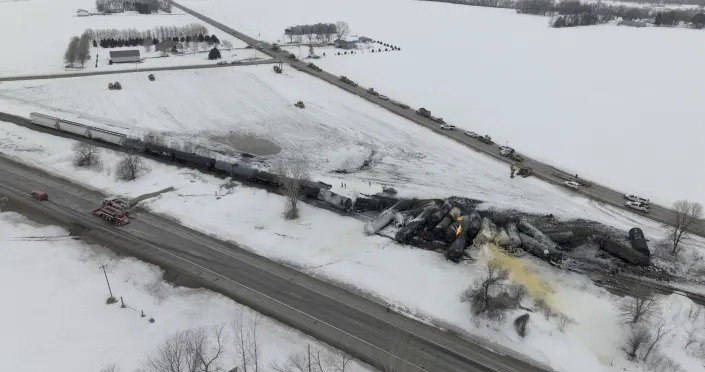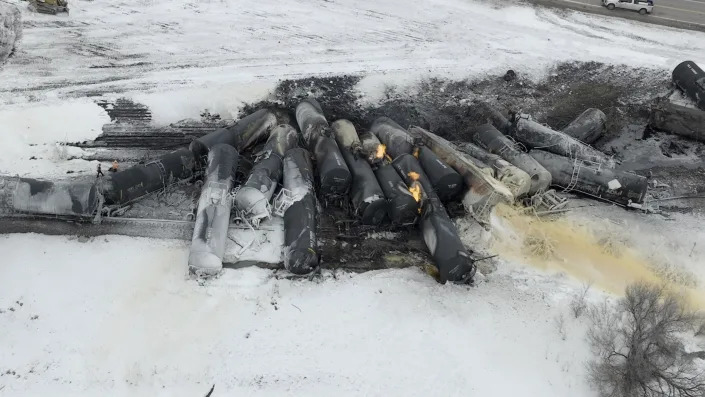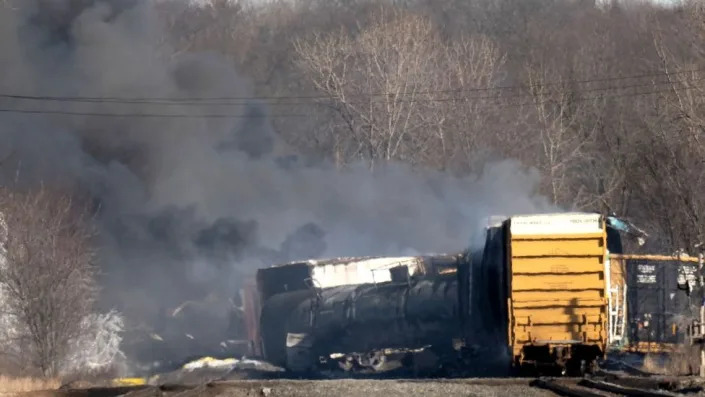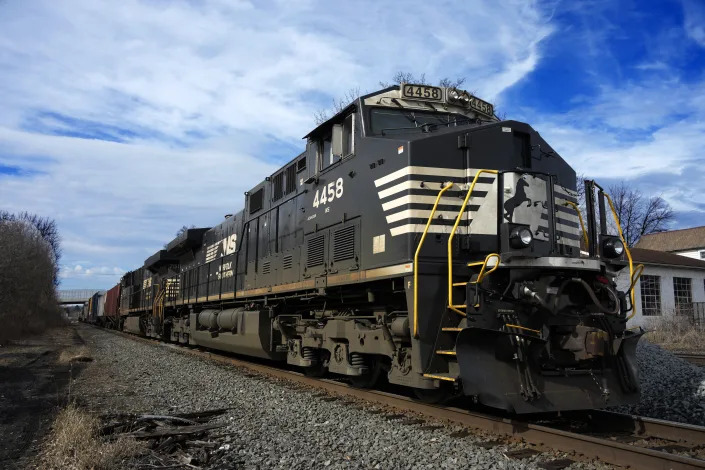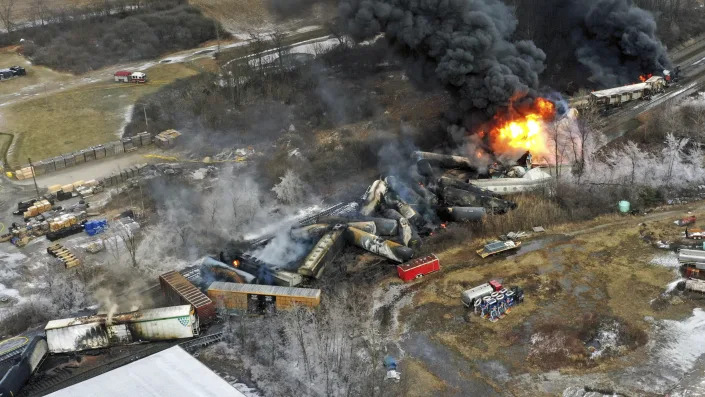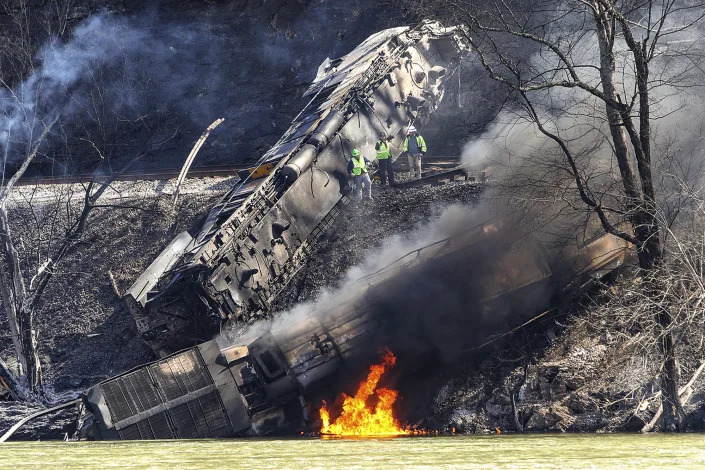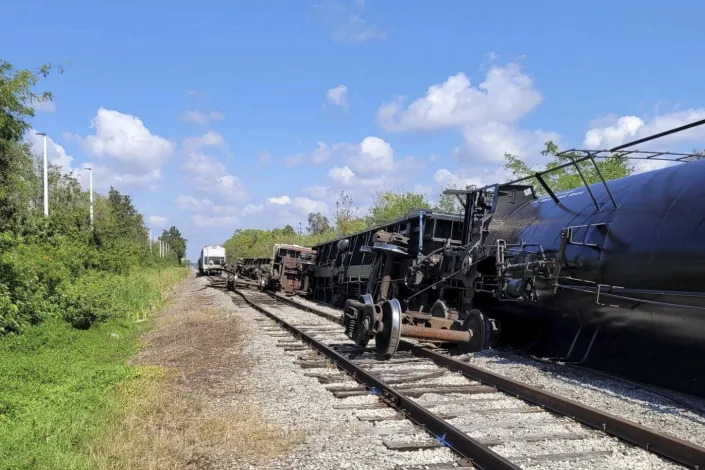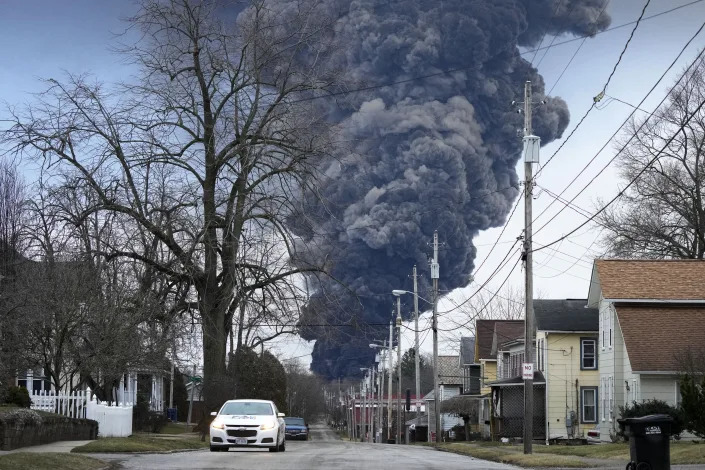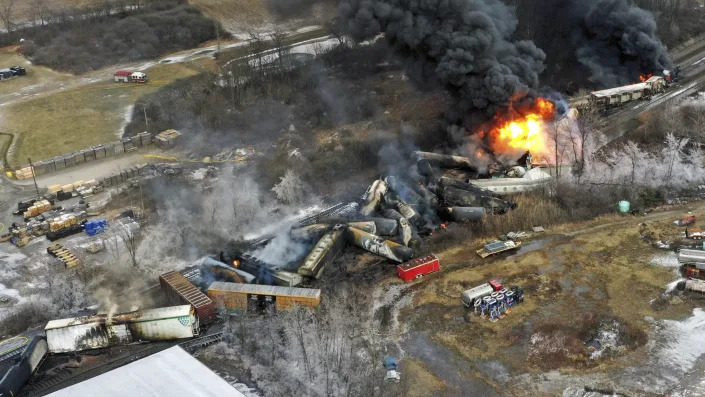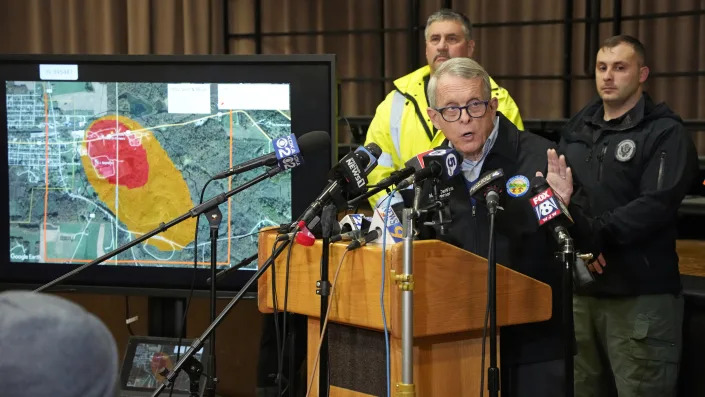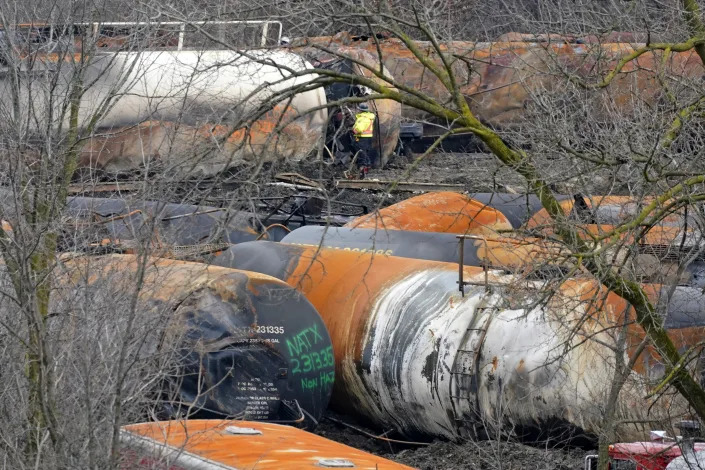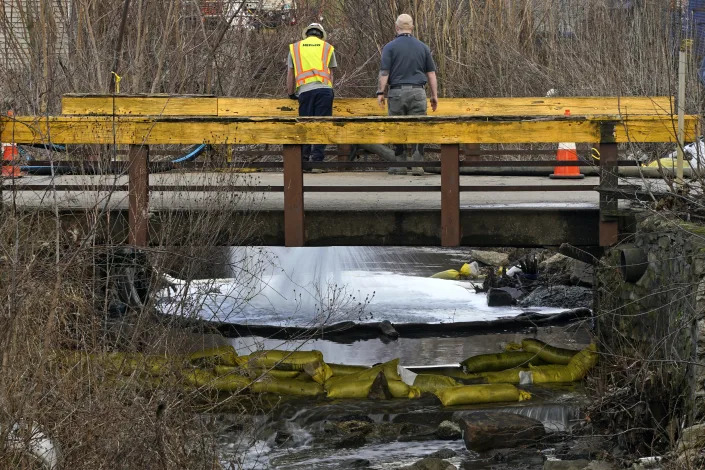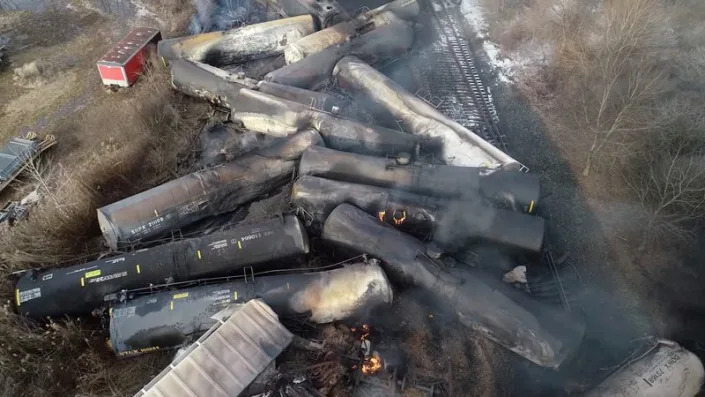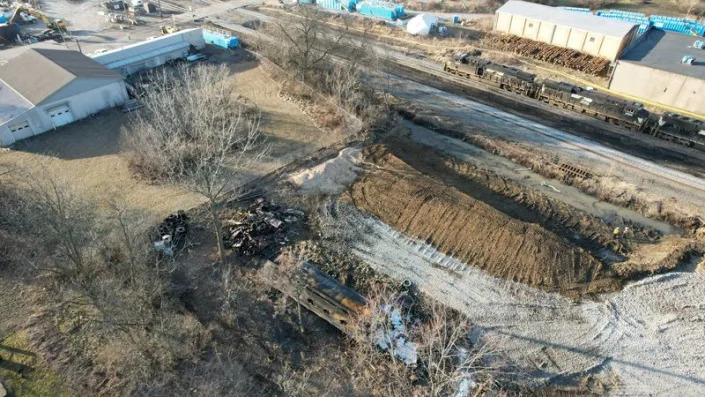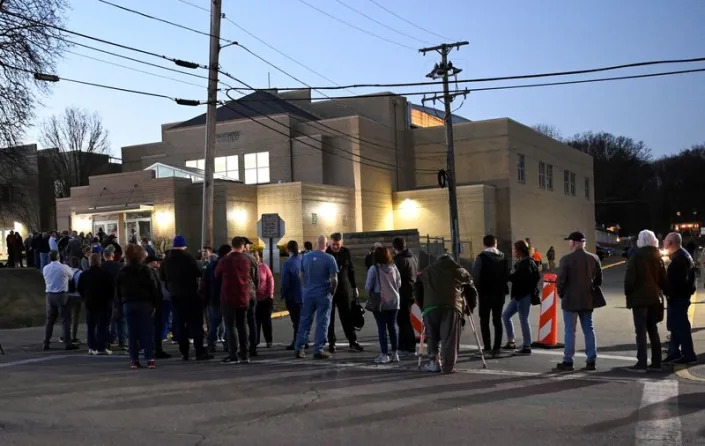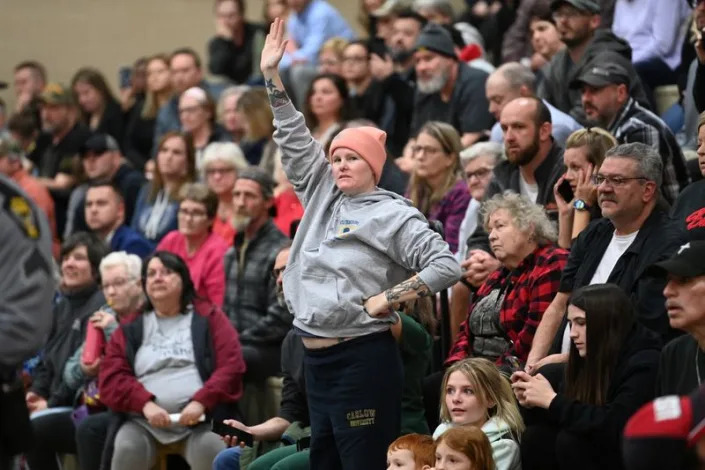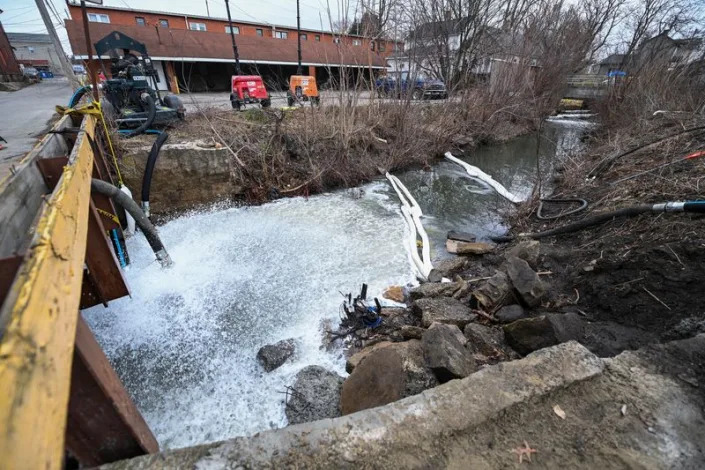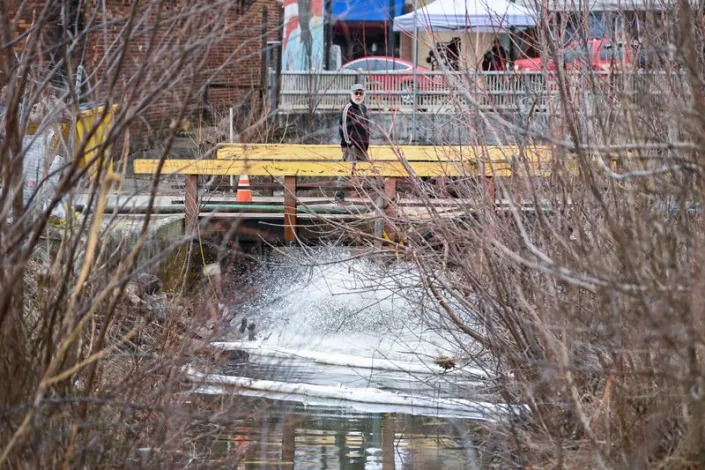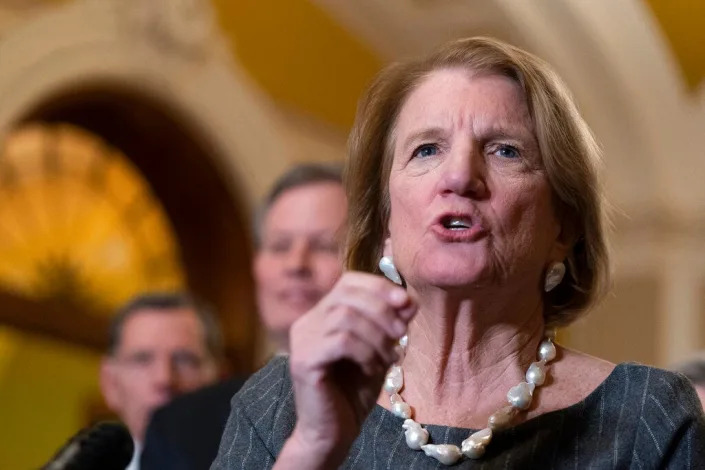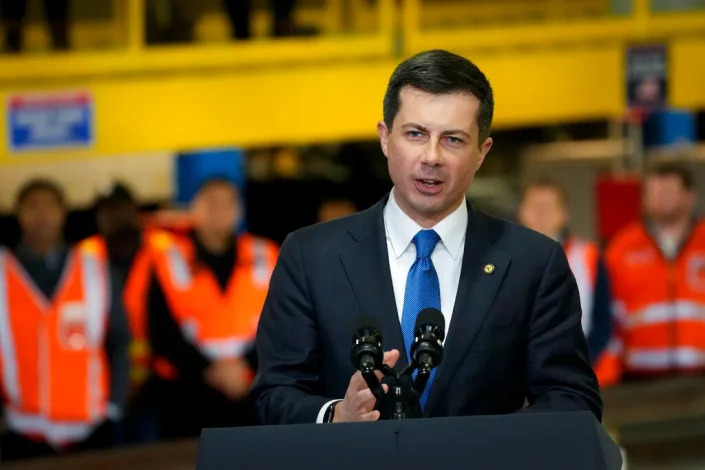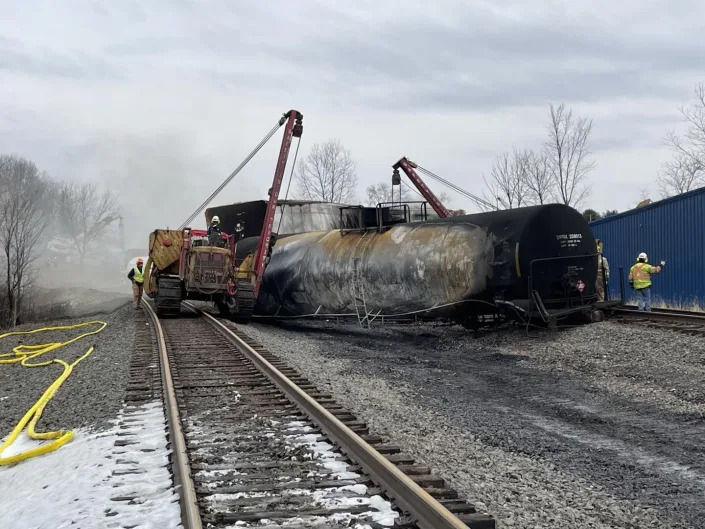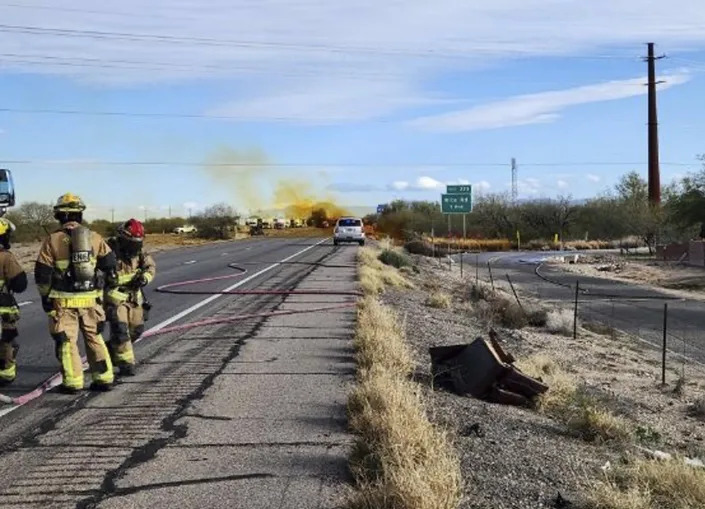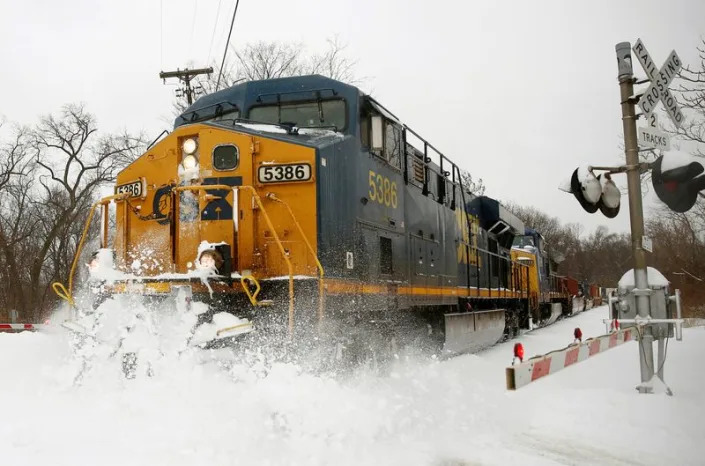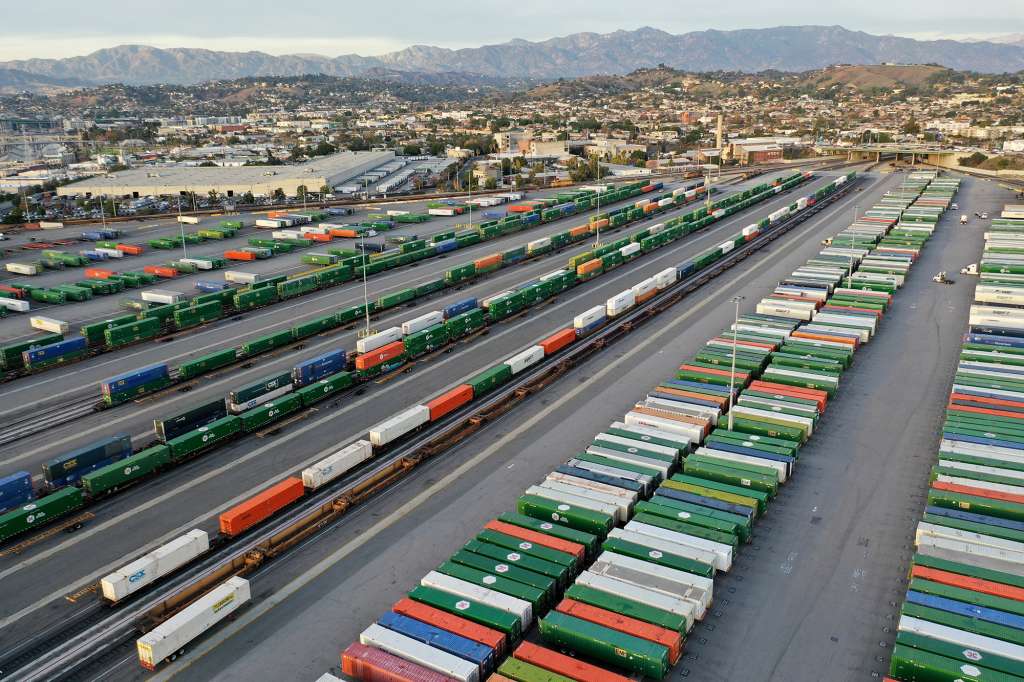Peter Eavis, Mark Walker and Niraj Chokshi
Sun, April 2, 2023

Alan Shaw, president and CEO, Norfolk Southern Corporation, center, testifies during a Senate Commerce Committee hearing in Washington, March 22, 2023. (Pete Marovich/The New York Times)
Norfolk Southern once had so few accidents and injuries that it won the rail industry’s prestigious E.H. Harriman safety award for 23 years in a row until it was retired in 2012. But in the past decade, the company has gone from an industry leader to a laggard.
The rate at which its trains are involved in accidents and its workers are injured on the job has soared, putting it at or near the bottom on those safety measures among the country’s four largest freight railroads. Employees, former workers and some rail experts blame decisions by executives to cut thousands of jobs and put pressure on employees to speed up deliveries in a drive to bolster profits.
Lance Johnston is among the critics. Johnston was a Norfolk Southern engineer, or train driver, in the St. Louis area for more than 25 years until he was fired after a dispute in 2021 with his manager about problems with a train’s brakes.
That July, he said, he started a shift at the A.O. Smith rail yard in Granite City, Illinois, just across the Mississippi River from St. Louis, and found that his locomotive had defective brakes. After notifying a supervisor of the problem, Johnston said, he was told to use the locomotive, even though the defect was in violation of Norfolk Southern regulations and could, he said, make it hard to control the train and even lead to a derailment.
“When the equipment’s defective, the equipment’s defective,” he said in an interview last week. “You stop what you’re doing, and you fix it.”
Norfolk Southern’s operations have been under federal scrutiny since one of its trains carrying hazardous substances derailed in February in East Palestine, Ohio. Johnston said he believed that the operations had really begun deteriorating about four years ago, around the time the company said it would adopt efficiency measures known in the industry as precision scheduled railroading. He said the cutbacks meant there were not enough people to repair and maintain trains.
Since 2012, the size of Norfolk Southern’s workforce has dropped 39%, a bigger decline than at any of the other three large U.S. freight rail companies — BNSF, CSX and Union Pacific. Meanwhile, Norfolk Southern’s accident rate, which measures the number of accidents against the miles a company’s trains have traveled, soared 80%, the largest increase by far among the four railroads, though Union Pacific’s rate has been consistently higher. Rail accidents include derailments, collisions and fires.
Norfolk Southern’s injury rate for employees on duty has also risen, and over the past 10 years it has been, on average, significantly worse than those recorded by the other three large U.S. railroads. The injury rate did improve last year, and is better than the rates at other railroads, including Canadian companies that operate trains in the United States.
“It’s my goal to work with our new operations leadership team, union leadership and our front-line employees to further strengthen Norfolk Southern’s safety culture and make it the best in the industry,” CEO Alan H. Shaw said in a statement.
He added that Norfolk Southern’s derailments last year were its fewest in 20 years and that its injury rate was the lowest in 10 years. A representative for the railroad said its accident rate had gone up in part because its trains now traveled fewer miles.
Johnston said the safety concern he had raised was particularly important because the trains he had typically worked on traveled through residential areas in the St. Louis area. (The train that derailed in East Palestine started at a neighboring rail yard in Illinois.)
Johnston was fired soon after the dispute and has filed a whistleblower complaint with the Labor Department’s Occupational Safety and Health Administration claiming that he was fired for raising a safety issue.
Norfolk Southern declined to comment on Johnston’s OSHA case and his account of being fired. In a letter to OSHA, a lawyer representing the company said it had fired Johnston for “unbecoming” conduct based on an “insubordinate, threatening and profane outburst toward his supervisor.”
Since 2018, Norfolk Southern workers and former employees have filed 267 whistleblower complaints with OSHA, the most of any of the large freight railroads. The agency, which enforces whistleblower protection laws, including those in the rail industry, opened an investigation into 239 of the complaints.
In the same period, CSX had 204 complaints, followed by 198 from workers at Union Pacific and 138 at BNSF.
Norfolk Southern’s safety practices and culture are the subject of a special investigation by the National Transportation Safety Board. In opening the review, the board cited the East Palestine derailment and other recent incidents in which three workers were killed. The board is aiming to determine if “there’s something more systemic going on” at the company that caused those and other accidents, said Jennifer Homendy, the board’s chair.
The Federal Railroad Administration, the top rail regulator, is also investigating the company. Congress has held hearings, and lawmakers have introduced bipartisan bills that would impose tougher safety standards on all railroads, especially those that carry hazardous substances. And the Justice Department said Friday that it had sued the railroad, asking it to pay cleanup costs and additional penalties for the East Palestine derailment.
Rail experts said Norfolk Southern’s turn toward demanding more of fewer workers and pushing them to work faster was part of an industry trend. Under pressure from hedge funds and other investors, the largest freight railroads have aggressively sought to run their operations more efficiently over the past decade.
Precision scheduled railroading generally involves sticking to a strict operating schedule; cutting staff and assets like train cars, locomotives and rail yards; and running fewer but longer trains. Canadian National pioneered it in the late 1990s under its CEO, E. Hunter Harrison, who later took his hyper-efficient approach to Canadian Pacific and CSX.
In 2018 and 2019, Kansas City Southern, Union Pacific and Norfolk Southern announced plans to incorporate at least some of the principles advanced by Harrison, who died in 2017.
Those changes have been a boon to railroad investors and executives. Norfolk Southern’s profits have soared, and over the past five years it has paid shareholders nearly $18 billion through stock buybacks and dividends. On Friday, Norfolk Southern said Shaw’s pay more than doubled last year to $9.8 million. In his statement, he said his pay and that of other executives would now be based partly on safety metrics.
But the industry’s efficiency drive has so angered railroad workers that they nearly walked off the job last fall, threatening to imperil the U.S. economy. That strike was averted after Congress and President Joe Biden imposed a contract that many workers found sorely lacking because it did not guarantee them paid time off for illness or medical appointments.
“It’s profit over everything, not just safety,” Mark Wallace, a top official with the Brotherhood of Locomotive Engineers and Trainmen, said in reference to the entire rail industry. “It’s profit over customer service. It’s profit over employee satisfaction.”
Bill Tucker, a lawyer in Birmingham, Alabama, has been representing freight workers in cases against employers for 45 years. Norfolk Southern is the worst offender among the large railroads, he said.
One suit that Tucker filed in federal court in 2021 on behalf of two Norfolk Southern workers, Shane Fowler and Kelvin Taylor, asserts that a manager threatened to discipline the men after they reported safety issues that violated the Federal Railroad Administration’s defect and safety rules.
In the lawsuit, the two men said their manager had demanded that they remove the “bad order” tags, which are used to flag defective cars, from two cars. The complaint states that Fowler and Taylor reported their manager to the Norfolk Southern Ethics and Compliance hotline for safety violations. Soon after, the workers were themselves charged with safety violations, which they said they hadn’t committed.
Fowler and Taylor, who still work at the company, said through Tucker that they had no comment. “Morale on the railroads in general, and at Norfolk Southern in particular, is abysmal,” the lawyer said. “It’s just awful.”
Laws that govern the railways push employees with grievances to use internal company hearings, limiting their ability to take disputes to court. As a result, critics of the industry say, railroad companies find it easier than other businesses to dismiss employees and their complaints.
Some workers said that despite such problems they liked rail work. Johnston, the fired train engineer, wants to reclaim his job.
On the day of the dispute in 2021, he operated the locomotive with defective brakes until a federal regulator, doing inspections in the yard, noticed the problem and said the engine had to be taken out of service until repairs were done.
Later that day, having been told that the brakes were fixed, Johnston discovered that one was still defective, he said. He got into an argument with his supervisor and used his cellphone to take a photograph of the defect, which can be a violation of Norfolk Southern rules.
“I expected to be punished,” Johnston said, “but I didn’t expect to be terminated.”
c.2023 The New York Times Company
